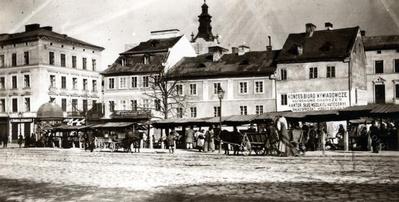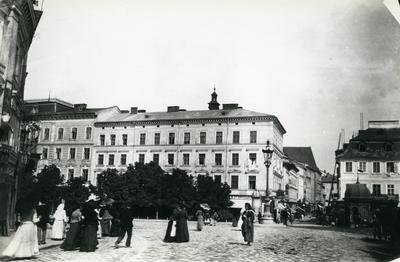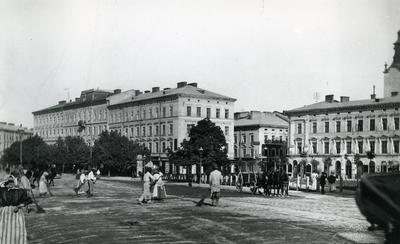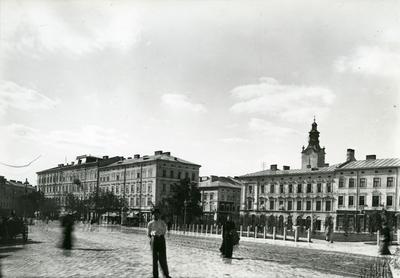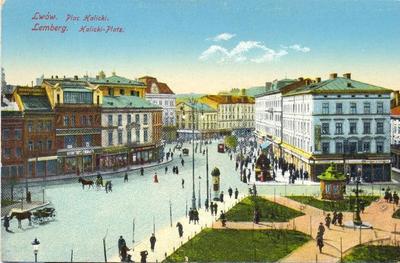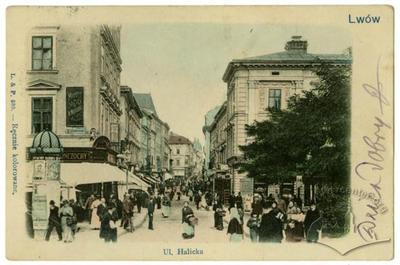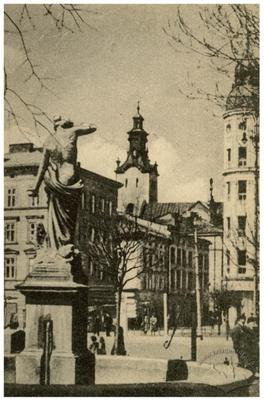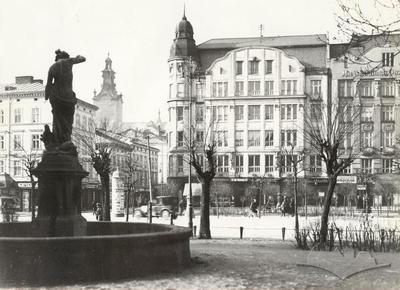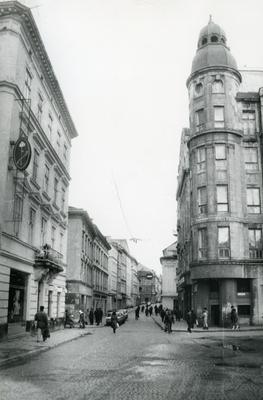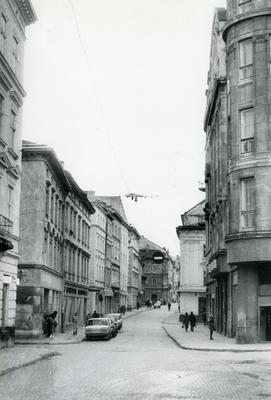Vul. Halytska, 20 – residential building
The house on Halytska street 20 (old conscription number 330, new conscription number 299) was built in place of the former defensive ditch behind the Halytska gate, in front of the guardhouse. According to the resolution of the Lviv city executive committee number 130 dated 26 February 1980, the house was entered in the local register of monuments under protection number 65-M. Today the ground floor premises are rented by various owners for commercial activities; in particular, “Emporio” clothes shop and a bank are situated there.
Architecture
The house has four floors; it is rectangular in plan, has three façades and five axes from the side of Halytska street. The house architectural style is that of Classicism. The corner from the side of the square is cut; a figure of St. Florian is placed in a niche at the level of the second floor. The ground floor is decorated with board rustic stones. The main entrance is situated in the middle of the frontal façade; a balcony supported by three white stone corbels with carved heads hangs over it. The upper stories are not divided architecturally; the fourth story is accentuated with a cornice. The windows have profiled framing; the second floor windows are crowned with triangular pediments. The entrance stoop is bridged with a cross vault; the staircase is based on vaulted constructions. The architecture forms of the early nineteenth century have remained almost intact in the house.
Personalities
A. Pawłowski –
a co-owner of M. Csernak’s and A. Pawłowski’s Exquisite Clothe
Rolls shop.
Aniela Huppert – Zsarotka children’s clothes shop owner.
Edward Fisch –
a treasury secretary who lived in the house number 20.
Zdzisław Stanecki –
an accumulator factory owner who lived in the house number 20.
Katarzyna Budzinska –
Stefan Komarnicki’s neighbour.
Klemens Ksawery Fessinger –
a Lviv architect.
Lorenz –
the owner of the house on Valova street 2.
M. Czerniak –
a co-owner of M. Czerniak’s and A. Pawłowski’s Exquisite Clothe
Rolls shop.
Maksymilian von Krus –
a Lviv architect.
Marianna Komarnicka (née Bojanowska) – the
house owner, Stefan Komarnicki’s second wife.
Maciej Krupski –
the parcel owner.
Otylia Hilferding –
a fashionable goods shop owner.
Stefan Komarnicki (Стефан
Комарницький)– a furrier and a
member of the “forty men collegium”, a descendant of an old
Ukrainian family and a member of the Stauropegion Institute from 23
April 1797, the first owner of the house on Halytska street 20.
Tomasz Łubieński –
the Agricultural House for Commerce and Production bureau owner.
Feliks Triebwasser –
the owner of the house on Valova street 2.
Feliks Feliński –
a tailor who lived in the house number 20.
Ferdynand Güttler –
a small wares shop owner.
Sources
2. Central State Historical Archive of Ukraine in Lviv (CDIAL). Item 166/1/895:109, №47.
3. CDIAL. Item 166/1/902:438, №164.
4. CDIAL. Item 166/1/941:33, №8.
5. CDIAL. Item 166/1/1029:491, №383.
6. Ksіęga adresowa król. stoł. miasta Lwowa, (Lwów, 1913).
7. Володимир Вуйцик, Leopolitana II (Львів: Класика, 2012).
Media Archive Materials
Related Pictures














